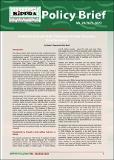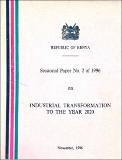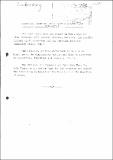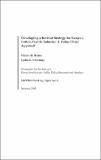| dc.contributor.author | Onyoni, Robert | |
| dc.contributor.author | Basil, Dan | |
| dc.date.accessioned | 2023-01-26T07:45:27Z | |
| dc.date.available | 2023-01-26T07:45:27Z | |
| dc.date.issued | 2022 | |
| dc.identifier.uri | https://repository.kippra.or.ke/handle/123456789/4063 | |
| dc.description.abstract | The Kenya Vision 2030 economic pillar underscores the
importance of creating a robust, diversified and competitive
manufacturing sector. The economic blueprint aims to
achieve the goal by revamping local production and
expanding participation in regional markets. The African
Continental Free Trade Area (AfCFTA), for instance,
provides a competitive trading environment and market to
foster economic transformation.
Despite the opportunity that AfCFTA presents, Kenya’s
prospects in manufacturing declined in the past decade.
As an example, Kenya’s manufacturing as a share of GDP
declined from 13 per cent in 2013 to 7 per cent of GDP in
2021 . Expansion of manufacturing sector is critical for job
creation and economic growth. In addition, manufacturing
attracts foreign investment; manufactured goods offer
opportunities for increased value addition and call for robust
trade logistics. The trade logistics can be achieved through
understanding the factors curtailing Kenya’s potential and
how the country can alleviate the situation and exploit the
AfCFTA potential. | en |
| dc.language.iso | en | en |
| dc.publisher | The Kenya Institute for Public Policy Research and Analysis (KIPPRA) | en |
| dc.relation.ispartofseries | Policy Brief;No. 20 of 2022/2023 | |
| dc.subject | Leather Industry | en |
| dc.subject | Economic Transformation | en |
| dc.subject | Manufacturing Sector | en |
| dc.subject | Trade Logistics | en |
| dc.subject | Tanning Industry | en |
| dc.title | Policy Brief No. 20 of 2022/2023 on Revitalizing the Leather Industry to Foster Economic Transformation | en |
| dc.type | Other | en |
| ppr.contributor.author | The Kenya Institute for Public Policy Research and Analysis (KIPPRA) | en |




